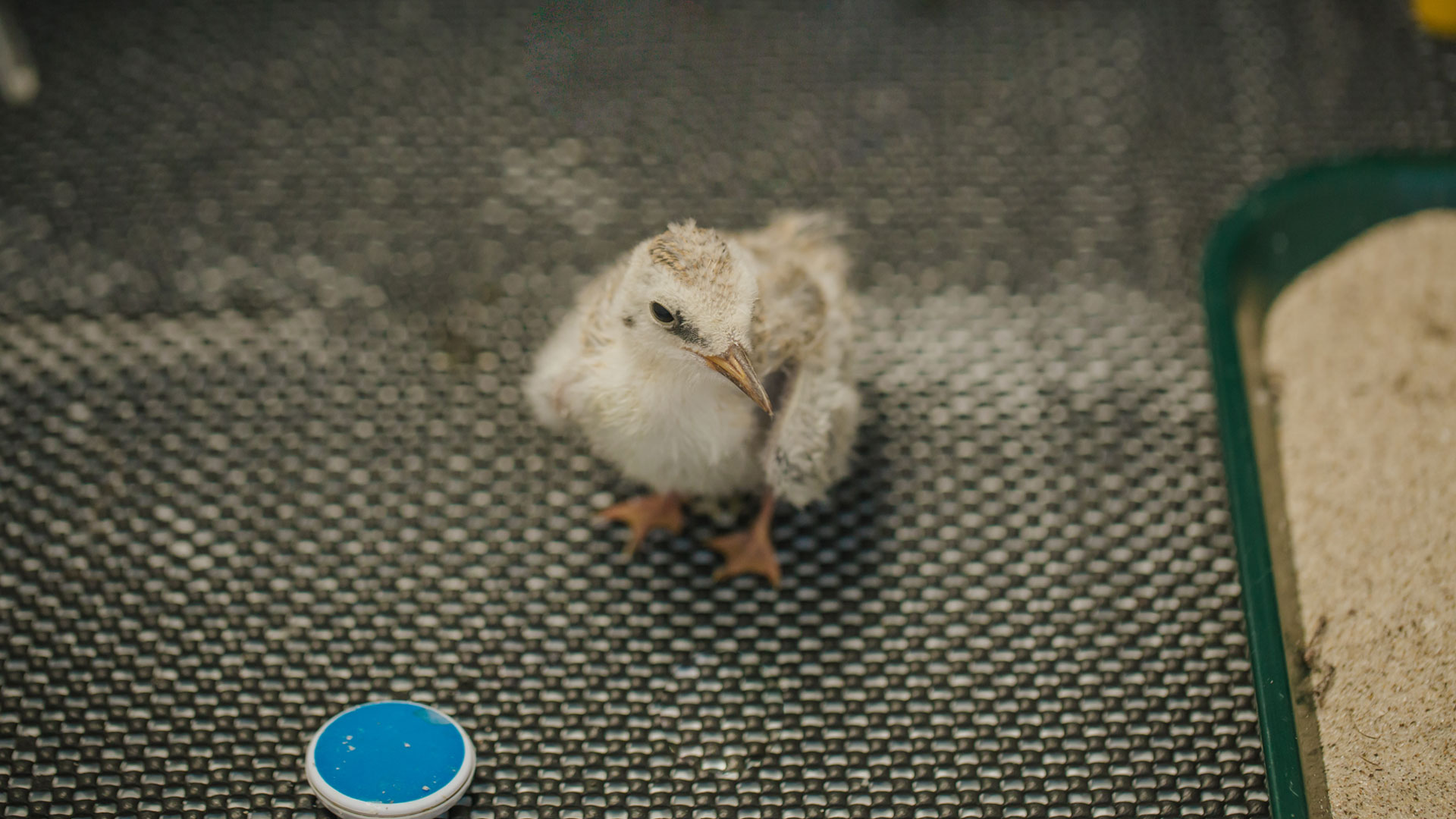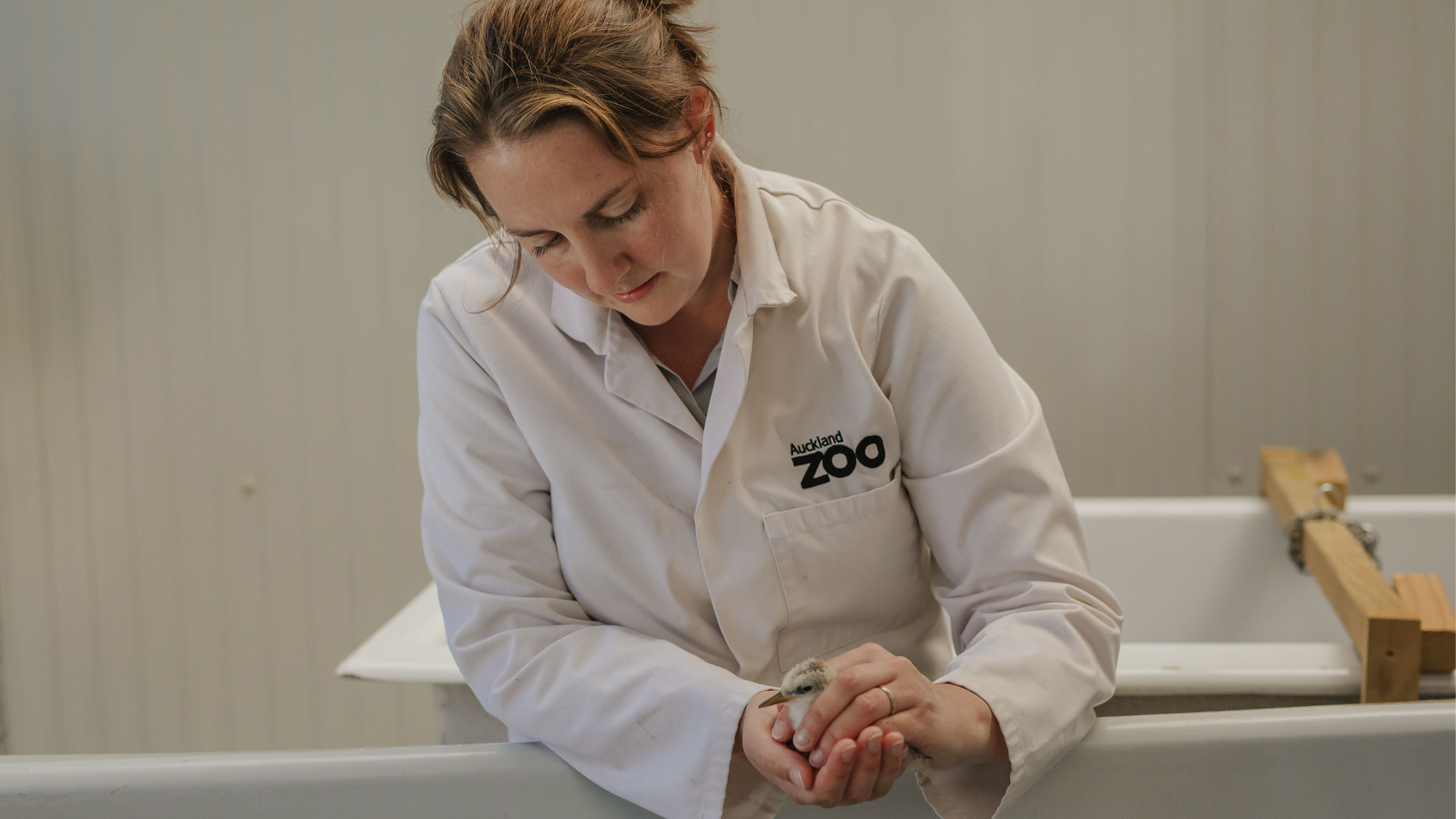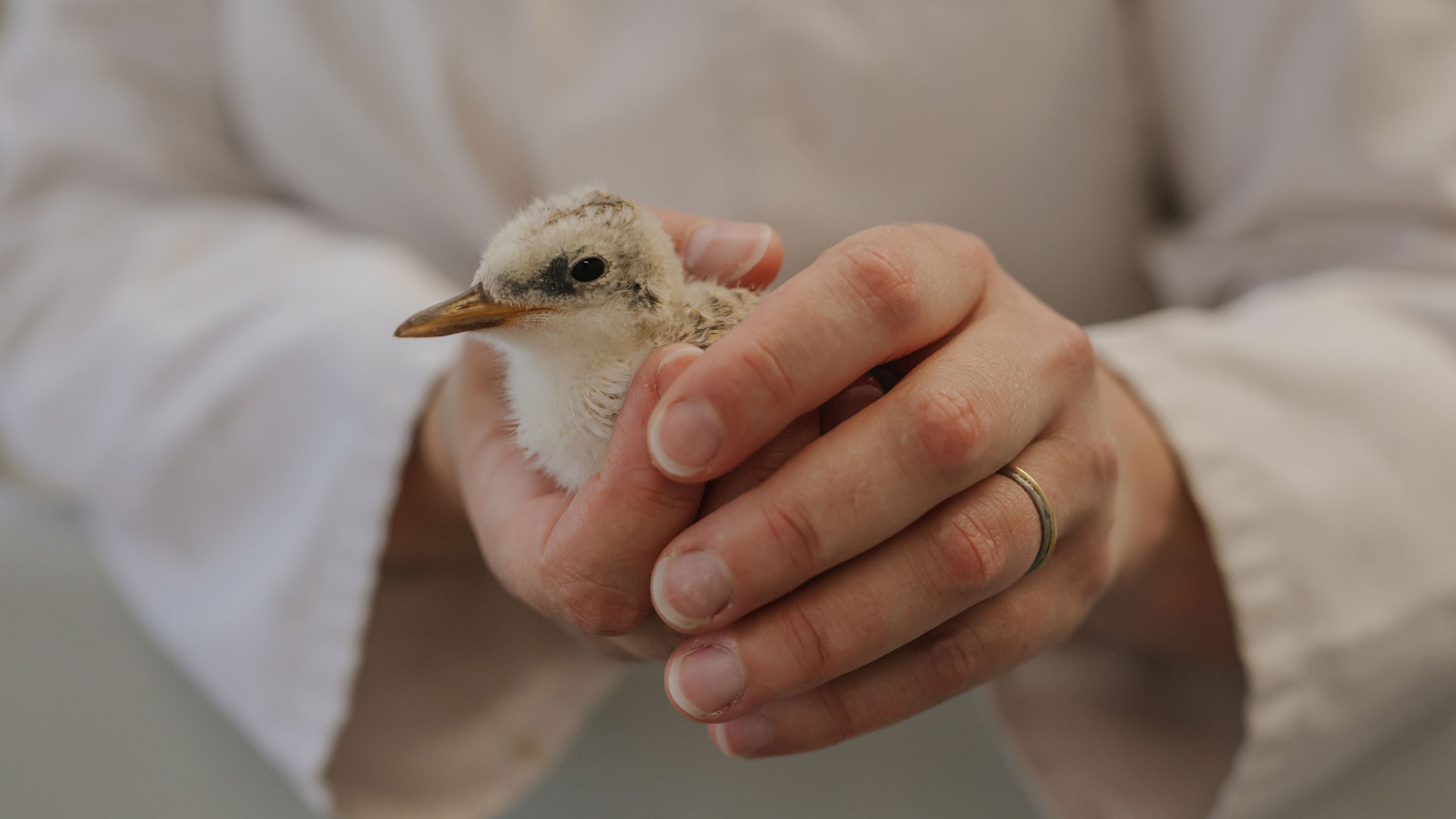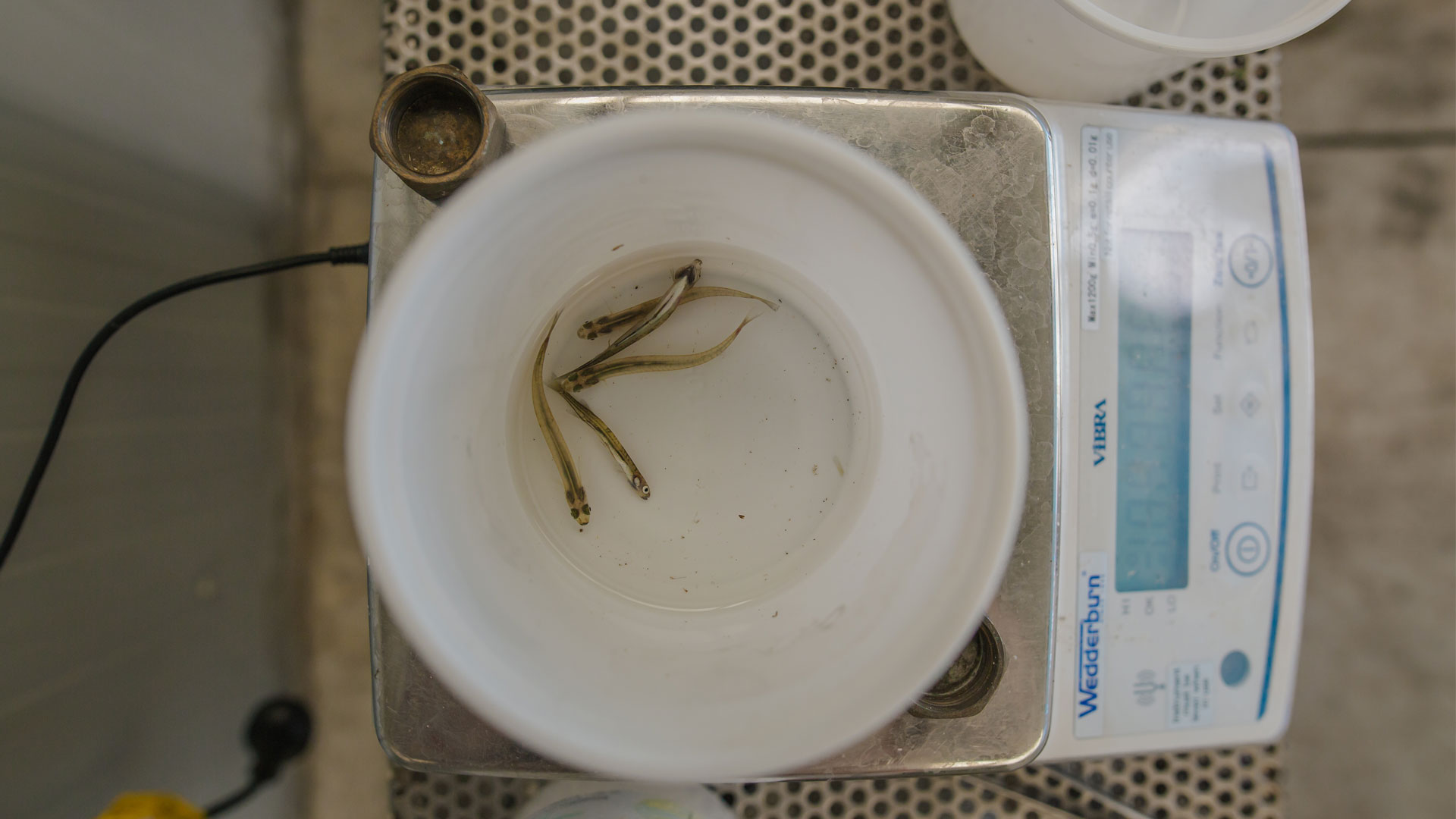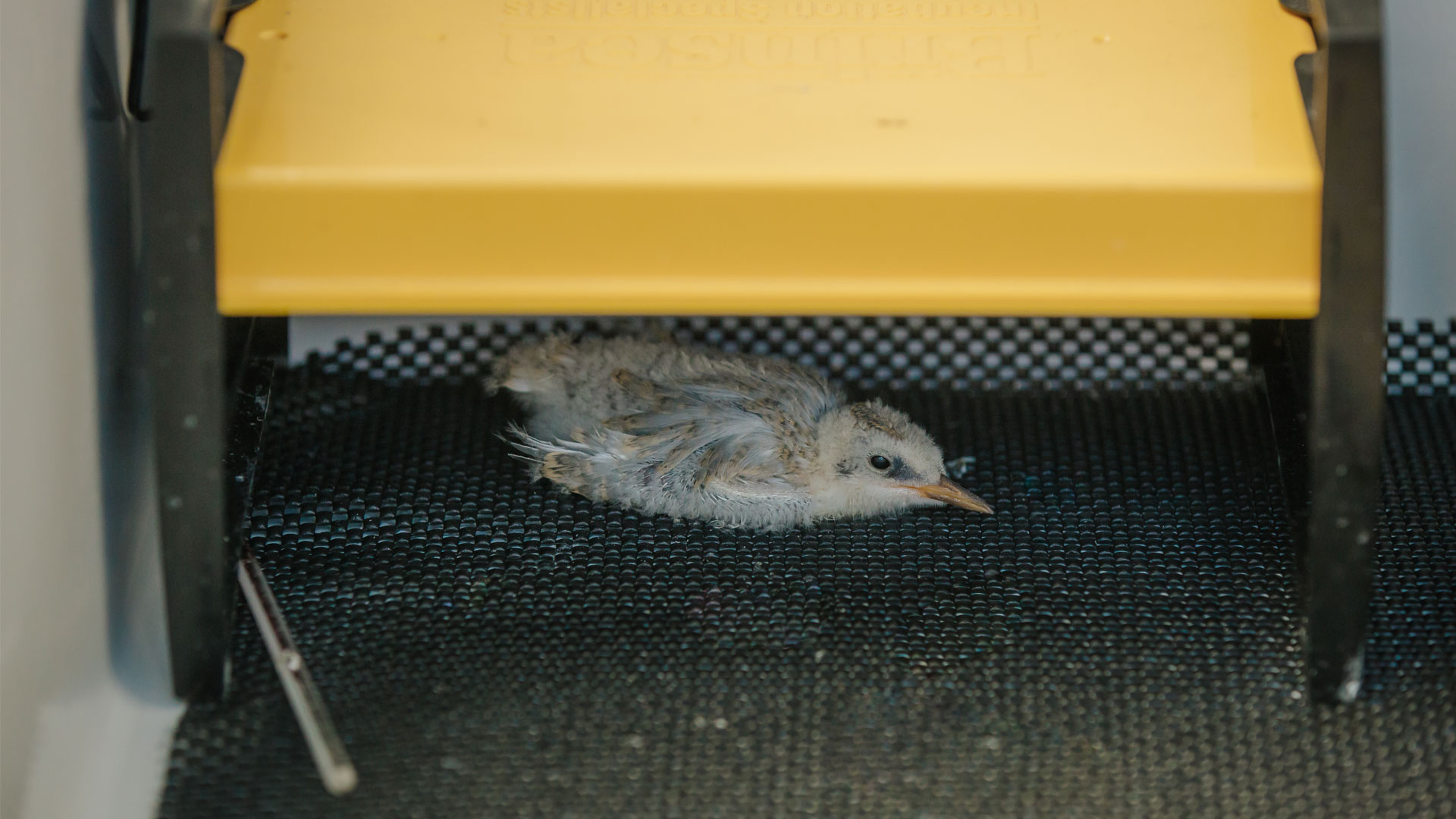Hatched and hand-reared initially at Auckland Zoo, this chick (see video below) is one of a handful of tara iti to be reared in a new programme, that is in the initial learning phase, to help recover the critically endangered species. Working in partnership with the Department of Conservation and mana whenua, intensive management combining zoo and field conservation skills, has proved invaluable for the recovery of many New Zealand species and is now being tested for one of our most threatened endemic breeding birds.
Video
Watch as this tara iti chick learns to fish for itself!
Encouraged by birds team leader Carl, this tara iti chick has been hatched and hand-reared at the zoo as part of a conservation partnership with DOC, and is now learning to find fish for itself.
New Zealand tara iti are one of the rarest terns in the world and the threats to their survival are numerous. Nesting on low-lying shell and sand mounds, their nests and eggs are extremely vulnerable to storms and tidal events. This is in addition to the threats posed by habitat disturbance, mammalian predators like rats, cats and stoats, and even off-road vehicles, horse-riders, human beachgoers and their dogs.
DOC rangers monitor every single fairy tern nest and its eggs, and any at risk of flooding or other environmental catastrophe, are safely relocated to the zoo for incubation while the threat passes. Most eggs are returned to their original nest and parents where possible, or sometimes an un-witting foster family, for natural parental rearing and hopefully fledging. However, the odds are still very much against tara iti chicks and in some breeding seasons, just a few chicks make it to fledging and independence. This simply isn’t enough for the population to grow and for the past 20 years the entire population has hovered around just 40 individuals.
Last year the zoo had the opportunity to trial artificial incubation all the way through to hatching and hand-rearing of the chicks. Amazingly and despite there being very little experience or information on this technique for terns, we were successful in rearing and releasing tara iti. This year, the zoo and DOC have built on this success and we’ve hatched, reared and released more tara iti using a specially designed release-aviary on the beach where tara iti naturally occur. In the aviary they are given the opportunities to fly and to forage for fish before being released to join the few remaining wild terns.
Today there are still only about 40 adult tara iti, and therefore every single egg and chick counts. Although this new intensive approach to recovery is still under development, it holds great potential for increasing the survival and fledging rate for tara iti, and therefore also great hope for the species.
Video
Working together to conserve New Zealand's fairy tern
Follow birds team leader Carl, and DOC rangers Shelley and Alex, as they detail the conservation partnership that led to the hand-rear and release of a rare fairy tern chick



